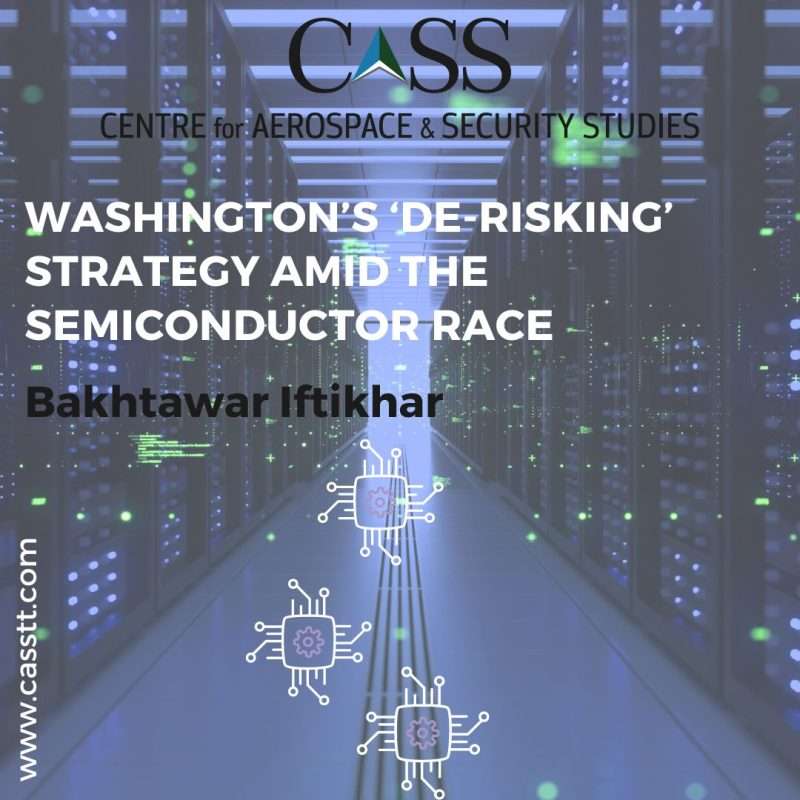Semiconductors or microchips are a critical technology for the United States (US) as well as the entire world because they power nearly everything – be it cars, smartphones, MRI scanners, airliners, industrial robots, data centres, autonomous vehicles, Artificial Intelligence or advanced weapon systems. These minuscule-sized chips have been directly accredited with an estimated USD 3 trillion in global GDP in a span of 20 years (1995-2015) and have indirectly contributed USD 11 trillion due to their widespread use in associated industries. Within this context, this article will explore Washington’s strategic moves to address its vulnerabilities in this market, fortify its technological leadership, and the potential ripple effects on the global stage.
The US has, over the years, recognised its susceptibility to disruptions in the semiconductor supply landscape. Although it leads in R&D activities, manufacturing is a weakness. The Semiconductor Industry Association’s 2021 report noted that 100% of the most advanced logic semiconductors (below 10nm) were produced outside the US in 2019. Taiwan accounted for 92% and South Korea, the remaining 8% in global logic process technology. Even American tech firms rely on Taiwan’s contract manufacturers to build 90% of their chips. Consequently, Washington may consider it paramount to prioritise continuity of supply in strained circumstances to safeguard its national interests.
The global semiconductor shortage amid the COVID-19 Pandemic initially exposed this vulnerability. As a critical technology, the ripples of disruption in this market can hinder defence, national security and economic development. In 2021, the shortage cost the US USD 240 billion in GDP and the auto industry resultantly produced 7.7 million fewer cars.
Recent geopolitical developments in the Taiwan Strait have the potential to impact semiconductor supply. The prevailing tensions might be indicative of China’s aspirations concerning Taiwan, often referred to by Beijing as its ‘inalienable part.’ The implications of potential Chinese assertiveness, combined with the ramifications of any US response, could introduce volatility into the semiconductor supply chain. Recognising this intricate geopolitical backdrop, the US Commerce Secretary commented on US dependence being ‘untenable and unsafe.’ Similarly, a former US Treasury Secretary drew parallels, suggesting that reliance on Taiwanese semiconductors could render the US as vulnerable as Germany was on Russian gas during the Ukraine conflict.
In recognition of these pressing concerns, Washington’s ‘de-risking’ strategy is a two-pronged approach to diversify and thereby secure its semiconductor supply. The first prong is internal with aggressive investment in domestic chip-making capacity to shift production to home soil. To that end, Washington passed the Creating Helpful Incentives to Produce Semiconductors (CHIPS) and Science Act in August 2022, under which USD 280 billion has been earmarked spent over the next ten years to ‘bolster US semiconductor capacity, catalyze R&D, and create regional high-tech hubs and a bigger, more inclusive STEM workforce.’ Among other things, the CHIPS Act offers ‘25% in tax credits for capital expenses for manufacturing of semiconductors and related equipment.’ The US import of chip-making machinery from Taiwan has also surged. Moreover, Taiwanese Semiconductor Manufacturing and Co plans to build another factory in Phoenix, Arizona, and thus help advance American leadership in the chip sector.
The second prong extends outwards, as Washington attempts to strengthen supply from within the Western Hemisphere or from ‘reliable’ partners. Harnessing the overall collective production capacity could lead to the creation of a North American Semiconductor Corridor (NASC) with Canada and Mexico. The US-EU Trade and Technology Council also identifies securing semiconductor supply chains as an area of cooperation. Other examples include partnerships with India. A Chips 4 Alliance including the US, Japan, South Korea and Taiwan was also rumoured but the success of this policy remains to be seen.
Such initiatives could increase the US’ resilience in case of supply chain disruptions. The national security logic dictates that even if diversification is costly, the supply would at least be safe. Investment may also create jobs on the domestic front, as well as bolster the country’s leadership status in this critical technology – though ‘major shifts in semiconductor sourcing patterns will take time’.
Bakhtawar Iftikhar is a Research Assistant at the Centre for Aerospace & Security Studies (CASS), Islamabad, Pakistan. The article was first published in The News International. She can be reached at cass.thinkers@casstt.com.
Design Credit: Mysha Dua Salman





